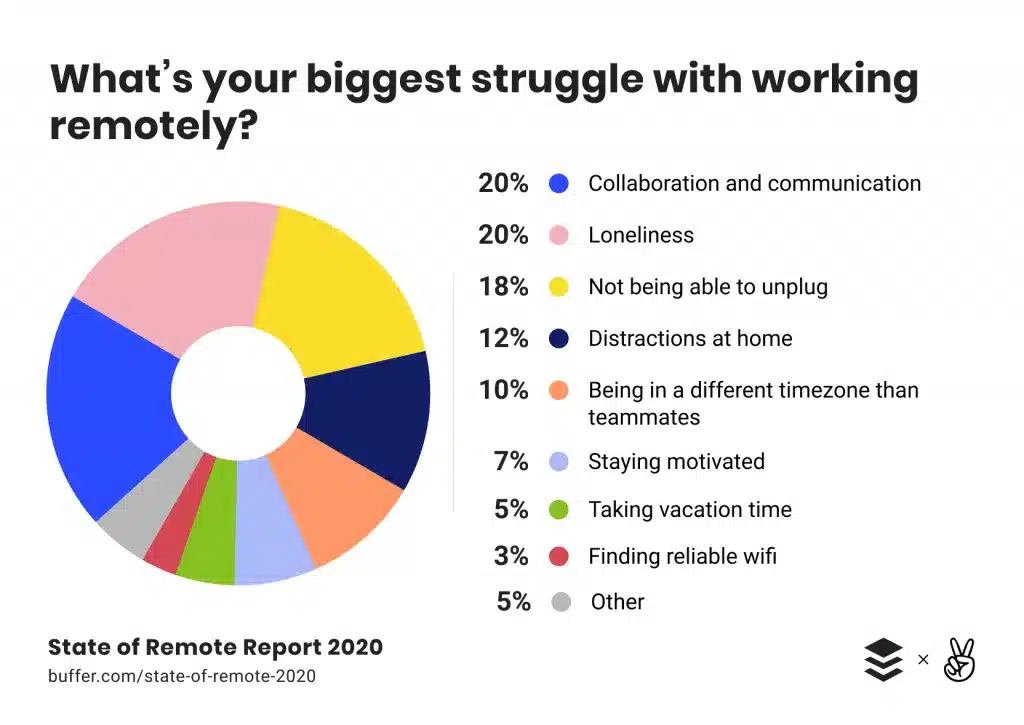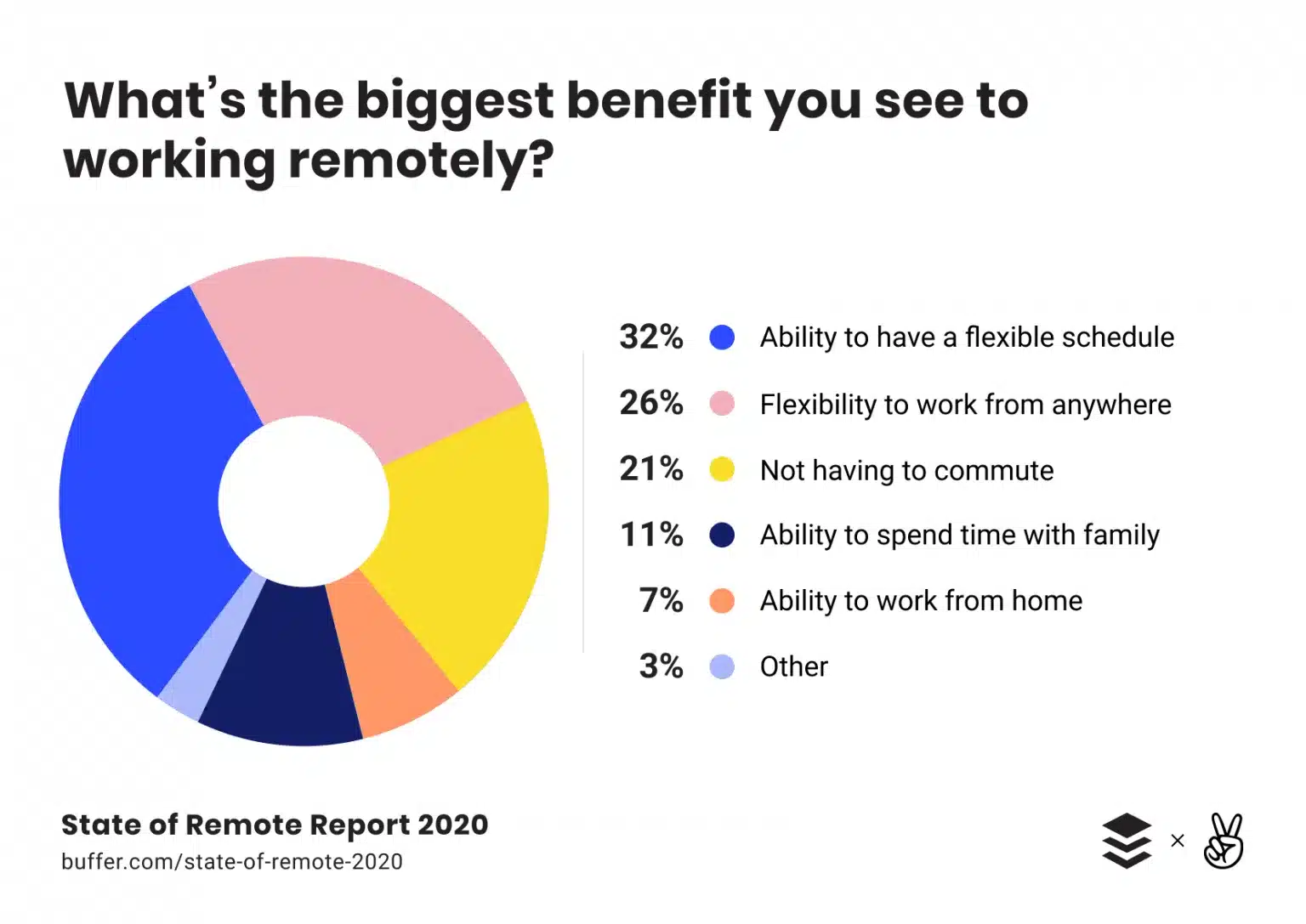
The COVID-19 pandemic has brought remote work and its many challenges into sharp focus. One of the foremost issues is how to build trust with remote teams when the manager is not physically present.
Managers have the question — How do I know if remote employees are working?
Remote employees, in turn, may think — How can I show my manager that I am getting work done?
Collaboration and communication are considered among the biggest struggles of remote work, followed by social isolation and an inability to maintain a work-life balance.
To build trust with remote teams, managers need to look at practical solutions to these problems.

It is not easy to build and maintain trust in traditional physical workplaces, but it is even more challenging when people have to work with team members they may not even have seen.
If companies believe that employees will be less productive if managers aren’t around to supervise them, teams will inevitably perform poorly. The issue is a lack of trust.
However, studies have shown that it is possible to actively build trust with remote teams.
Remote companies need to be deliberate about how they build and maintain relationships to engender trust between managers and employees.
Why is trust important in remote work?
Trust is not simply about having positive feelings or liking the people one works with.
By fostering a culture of trust, companies can make a meaningful difference in business outcomes and employee engagement.
This is because a culture of trust enables greater productivity, increased profitability, and better quality products and services.
Larry Prusak, Senior Advisor and Faculty, Columbia University, author, Working Knowledge, talked about the relationship between trust and collaboration:
“If I had to pick the one thing to get right about any collaborative effort, I would choose trust. More than incentives, technology, roles, missions, or structures, it is trust that makes collaboration really work. There can be collaboration without it, but it won’t be very productive or sustainable in the long run.”
In fact, a Harvard study found that employees at high-trust companies experience:
- 50% greater productivity
- 76% more engagement
- 74% less stress
Being trusted to accomplish tasks on your own is a great motivator. And trust is key to the success of remote teams.
Also, the biggest benefit of working remotely is the “ability to have a flexible schedule.” This cannot be possible without trust.

4 ways to build trust with remote teams
In remote companies, employees need a shared understanding of how to think about trusting their managers and team members.
We explore 4 ways in which managers can build trust with remote teams:
1 Get to know each other

The more you get to know people, the easier it becomes to trust them.
Harvard Business Review mentions how our brains are primed to connect — “The brain network that oxytocin activates is evolutionarily old. This means that the trust and sociality that oxytocin enables are deeply embedded in our nature.”
Remote employees cannot have organic conversations in office corridors, over coffee, or at their desks. Thus, managers have to be intentional about creating interactions to help people bond.
Sarah Milstein, Senior Director of Engineering, Mailchimp, has an interesting perspective to offer:
“When you meet regularly over video and see each others’ homes, families, and pets, you can easily understand them more fully as people than you do in a limited workplace setting.”
How can getting to know each other build trust?
1 Virtual watercooler
Create informal spaces for remote team members to socialize, such as Slack channels where people can discuss their hobbies and interests and other fun stuff.
The time people spend on these channels shouldn’t be considered a waste because it helps them get to know each other and consequently, build trust.
Virtual Games for Remote Teams
CoffeeConnect connects two people every week based on their interests in slack and helps them build camaraderie easily with ice-breakers questions, rapid-fire quizzes and virtual coffee.
ICEBREAKER QUESTIONS EBOOK
Icebreaker questions you can ask in every meeting during the COVID-19 pandemic.
Effective One on One Meetings
We built a software that automatically schedules, lets you set agenda, take notes, exchange feedback and track actions – all in one place.
2 Paired calls
Another fun way in which managers can build trust with remote teams is to randomly pair people across the company for a weekly video call.
Managers can also use the breakout feature on Zoom to convert their all-hands meetings into small group meet-ups.
3 One on one meetings
It is a good idea to spend the first five minutes of your one on one meetings discussing things related to your team member’s life outside of work.
When working remotely, all time is scheduled so people tend to discuss only work matters.
As a manager, you can attempt to recreate some of the casual conversations you would have had with your report had you both been in office.
Also, the one on one meeting is a psychologically safe space where people feel comfortable opening up about themselves without fear of judgment.
It is the ideal platform for managers to build trust with remote teams.
4 Icebreaker questions
The pandemic has forced people to juggle work and home without any separation between the two. Team members tend to look towards leadership for support and guidance during a crisis.
Icebreaker questions can help you send the message that you care about your report and are willing to support her in these tough times.
We have an excellent list of icebreaker questions that are appropriate for the COVID-19 pandemic. You can even download a PDF version!
Virtual Games for Remote Teams
CoffeeConnect connects two people every week based on their interests in slack and helps them build camaraderie easily with ice-breakers questions, rapid-fire quizzes and virtual coffee.
ICEBREAKER QUESTIONS EBOOK
Icebreaker questions you can ask in every meeting during the COVID-19 pandemic.
Effective One on One Meetings
We built a software that automatically schedules, lets you set agenda, take notes, exchange feedback and track actions – all in one place.
5 Virtual games
Team retreats are neither possible nor sensible during a pandemic. Also, not every remote company can afford to organize such team bonding activities.
However, that sh
ouldn’t prevent remote managers from conducting virtual games designed to help team members get to know each other and have fun while doing it.
Personality tests and quizzes are quite popular among remote employees.
Some enterprising companies even have weekly newsletters with interesting facts about team members.
6 Virtual happy hours/digital team lunches
Remote team members shouldn’t feel left out because they cannot grab a few drinks after work or catch up over lunch.
Managers can organize virtual happy hours or team lunches where people can share meals and conversation over a video call. It might sound awkward but is immensely popular.
2 Make transparency your motto

Research shows that the level of positivity and transparency of a leader directly impacts an employee’s trust in that leader.
It is easy to accidentally hold back information or forget to provide enough context for team members when working remotely.
Managers need to be deliberate about communicating all the details and providing the necessary information to reports.
How can fostering transparency build trust?
1 Keep employees informed
People don’t like to be surprised and one too many surprises eat away at hard-earned trust.
Imagine being told on the day you start work that there’s a new hire who will work along with you. How many questions will be swirling around in your head?
Won’t you look at the new person and your manager with suspicion?
Sudden changes of plans is not a good way to retain the trust of your reports.
Usually, remote teams rely on a team chat tool like Slack for most of their communication.
Instead of using the chat tool like email to send direct messages to people, encourage the use of public channels for conversations.
When all important discussions are publicly held, everybody in the remote company has access to it. This creates a culture of trust.
Nobody feels left out of conversations and has an equal opportunity to contribute to important decisions.
Even if conversations are held privately, the important takeaways should be posted publicly for the team.
2 No anonymous questions/comments
Some chat tools have an anonymous feature where you can hide your identity while asking a question. Don’t use it!
By attaching a name to your question or comment, you are helping to foster transparency and build trust with remote teams.
3 Email communication
Email remains the most-used form of formal communication in remote teams and it is an important form of documentation.
To further transparency, BCC your message to relevant internal lists like finance or marketing.
In this way, the information doesn’t remain locked up in people’s inboxes or available only to a select few.
4 Act on feedback
Unless you act on feedback, there is no point in collecting it.
Information collected through anonymous surveys and forms reveals a lot of insights about employee engagement.
Use it to make a positive change to the remote work environment where each team member feels included and valued.
3 Set clear expectations

It may surprise you to know that your remote team members can be held accountable for tasks only if they know what is expected of them.
Always articulate your expectations, even if it seems blindingly obvious what you want.
Create clear goals, communicate them precisely, document them meticulously, and share them with all team members.
Next, track the progress of these goals to see how each team member has fared.
Setting clear expectations will help your remote team know exactly what to do.
How can setting clear expectations build trust?
1 Clearly communicate what you want
Let your reports know exactly how they should communicate their progress and which channels they should use.
Should they send a daily or a weekly update?
Are they required to use email or a particular app?
Should they wait for their one on one meetings to discuss blockers?
2 Don’t keep changing expectations
Once you have set and communicated your expectations, don’t keep changing them frequently.
Ensure that all meeting notes and action items are recorded.
In fact, a one on one meeting software can make life easier by streamlining meeting notes, agendas, and action items.
Virtual Games for Remote Teams
CoffeeConnect connects two people every week based on their interests in slack and helps them build camaraderie easily with ice-breakers questions, rapid-fire quizzes and virtual coffee.
ICEBREAKER QUESTIONS EBOOK
Icebreaker questions you can ask in every meeting during the COVID-19 pandemic.
Effective One on One Meetings
We built a software that automatically schedules, lets you set agenda, take notes, exchange feedback and track actions – all in one place.
4 Provide autonomy
It is impossible to observe if remote team members are working or not unless invasive apps are used that take screenshots of the worker’s screen every few minutes. (Not a good idea at all !)
Thus, most remote managers turn their focus to results.
Trusting people enough to equip them with necessary tools, documentation, and support and believing that they can make their own decisions encourages them to take accountability.
It also makes people trust the manager in turn and speak up when problems occur.
Such situations are a good learning opportunity for managers to build trust with remote teams.
How can providing autonomy build trust?
1 Focus on output, not hours worked
It is unfortunate that most traditional companies believe that trust and compliance can only be achieved if people are physically present in the office.
In a remote company, if you do not trust your reports while creating systems and processes for compliance, you alienating your team members.
In turn, you reduce engagement, productivity, and the quality of outcomes.
To help your remote workers thrive, focus on communication and collaboration, and put the metric of ‘hours worked’ on the backburner.
2 Reduce bureaucracy
As compared to a traditional office, it usually takes longer to get approvals or permissions because communication is slower.
When people are being trusted to manage their time responsibly, the same logic can be extended to money i.e policies related to tool procurement, expenses, and travel.
3 Don’t micromanage
Trust people to do their jobs without you looking over their shoulder or demanding updates every day.
You may be pleasantly surprised to see how your remote team members rise to the occasion and deliver results consistently.
Micromanaging remote teams ca
uses team members to lose the motivation to put in their best work. Neither does it foster a general sense of trust in the remote environment.
Conclusion
The pervasive fear that employees will not be effective without a manager looking over their shoulder causes two problems in remote work:
- the manager tends to micromanage his team
- employees tend to overwork to prove that they’re productive
The answer to both these issues — build a culture of trust!








